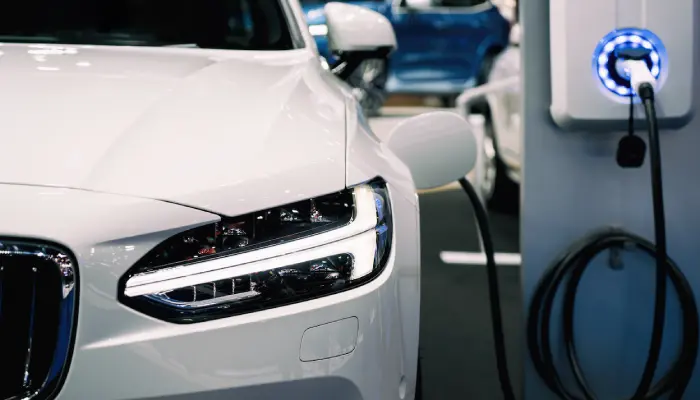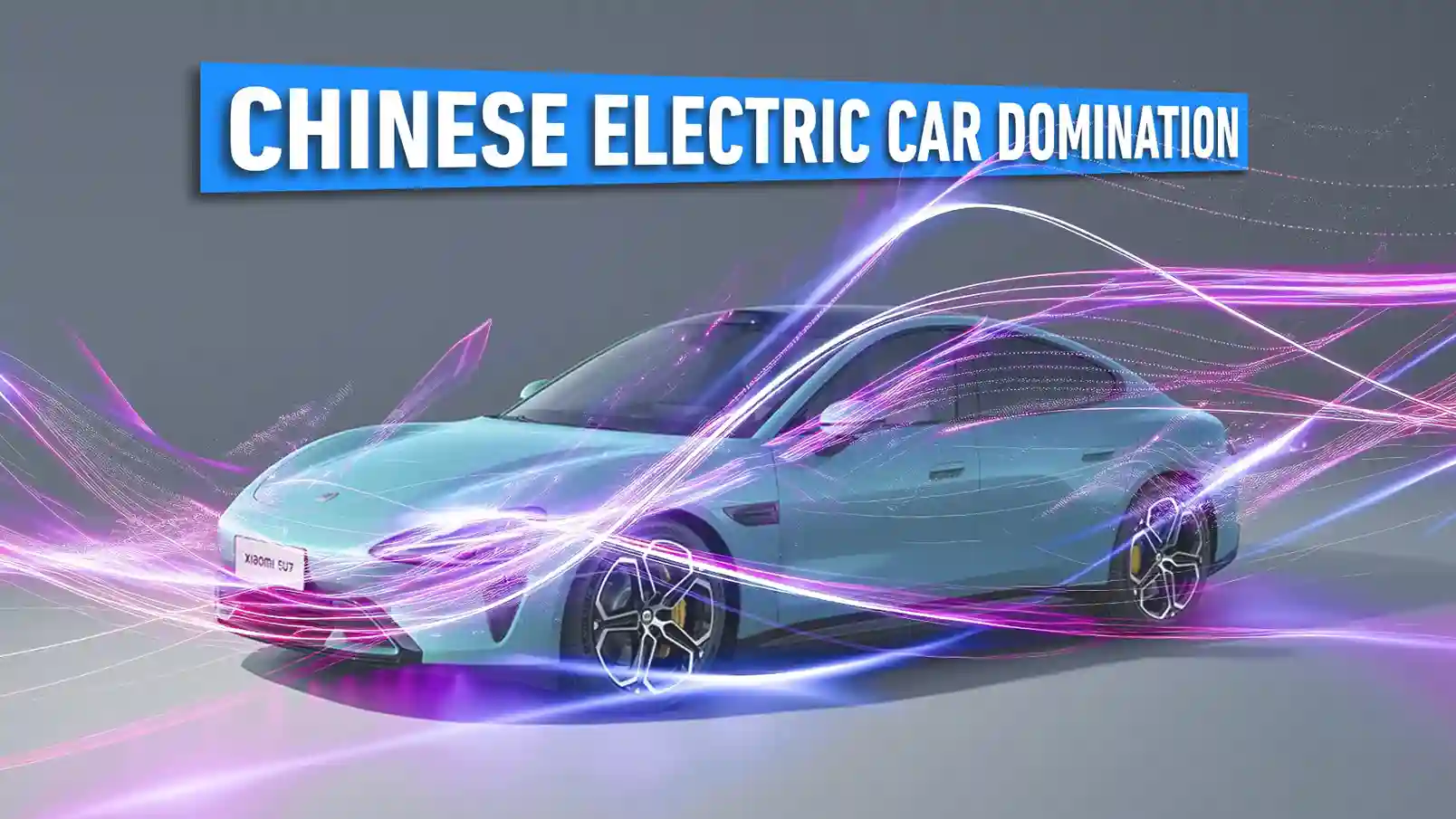Lightweight Materials in EVs: A Leap Toward Efficiency
Mia Anderson

Photo: Lightweight Materials in EVs: A Leap Toward Efficiency
As the world accelerates toward sustainable transportation, electric vehicles (EVs) stand out as a critical innovation. Beyond advances in battery technology and charging infrastructure, one key area shaping EV performance and viability is the use of lightweight materials. By reducing vehicle weight, manufacturers can extend range, improve efficiency, and enhance overall driving experience all while contributing to environmental goals.
This article delves into the role of lightweight materials in EV design, examining their benefits, challenges, and future potential.
The Importance of Lightweight Materials in EV Design
Weight is a critical factor in vehicle efficiency, directly impacting energy consumption and performance. For EVs, this relationship is even more pronounced. Heavier vehicles require more energy to move, meaning higher battery capacity is necessary to achieve reasonable ranges. However, larger batteries also add weight, creating a cycle of diminishing returns.
Lightweight materials break this cycle. By reducing the overall mass of an EV, manufacturers can achieve the following benefits:
- Increased Range: Lighter vehicles consume less energy per mile, allowing for longer trips on a single charge.
- Improved Performance: A reduced weight enhances acceleration, handling, and braking, making the driving experience smoother and more dynamic.
- Lower Environmental Impact: Smaller batteries can reduce the demand for rare and environmentally taxing materials like lithium and cobalt.
These benefits make lightweight materials an essential focus for automakers aiming to meet the growing demand for high-performing, eco-friendly EVs.
Common Lightweight Materials in EV Manufacturing
Several materials have emerged as frontrunners in the race to reduce EV weight. Each offers unique properties that cater to different components and design needs. Below are some of the most commonly used lightweight materials in EV production:
1. Aluminum
Aluminum is widely used in EV frames and body panels due to its high strength-to-weight ratio, corrosion resistance, and recyclability. Its use can reduce vehicle weight by up to 50% compared to traditional steel while maintaining structural integrity.
2. Carbon Fiber-Reinforced Polymers (CFRP)
Carbon fiber is exceptionally light and strong, making it ideal for structural components and performance-focused designs. Although expensive, its use in premium EVs like the BMW i3 and Tesla Model S showcases its potential.
3. High-Strength Steel (HSS)
While not as light as aluminum or carbon fiber, high-strength steel offers a cost-effective middle ground. By strategically incorporating HSS into critical areas, manufacturers can reduce weight without compromising safety or cost efficiency.
4. Magnesium Alloys
Magnesium is the lightest structural metal, often used in wheels, engine blocks, and transmission casings. Its applications in EVs are expanding as manufacturers refine its production and durability.
5. Advanced Plastics and Composites
Modern polymers and composites provide lightweight solutions for interior components and underbody panels. They are also more moldable, enabling creative and aerodynamic designs.
Challenges in Adopting Lightweight Materials
While lightweight materials offer clear benefits, their adoption in EV manufacturing presents significant challenges:
Cost Constraints
Materials like carbon fiber and magnesium alloys are expensive to produce and process. These costs can deter widespread adoption, especially for budget-friendly EV models targeting the mass market.
Manufacturing Complexity
Incorporating lightweight materials often requires specialized equipment, processes, and expertise. For example, carbon fiber components demand intricate fabrication techniques, adding complexity to production lines.
Recycling and Sustainability
The environmental benefits of lightweight materials can be offset if their production or disposal generates significant waste or emissions. Recycling carbon fiber and composites, for instance, remains a technical and economic challenge.
Safety Standards
Reducing weight should not compromise safety. Ensuring that lightweight materials meet crash-test standards and provide sufficient protection for passengers is a constant consideration for automakers.
Innovations Driving the Future of Lightweight Materials in EVs
Ongoing research and technological advancements are addressing the challenges of lightweight material adoption, paving the way for broader use in EVs. Some notable trends and innovations include:
Nanotechnology
Nanomaterials, such as graphene and nanotubes, offer exceptional strength-to-weight ratios. These materials are being explored for batteries, body panels, and structural components, promising lighter and more efficient designs.
Recycled and Sustainable Materials
Efforts are underway to develop recyclable carbon fiber and bio-based composites. These solutions align with the circular economy principles, minimizing waste and reducing reliance on virgin materials.
Hybrid Material Designs
Combining materials like aluminum and carbon fiber allows manufacturers to capitalize on their strengths while mitigating costs and limitations. These hybrid approaches are becoming increasingly popular in advanced EV designs.
3D Printing
Additive manufacturing, or 3D printing, is revolutionizing the production of lightweight components. This technology enables precise material placement, reducing waste and allowing for complex geometries that enhance performance.
Real-World Examples of Lightweight Materials in EVs
Several leading automakers are already showcasing the transformative impact of lightweight materials:
- Tesla: The use of aluminum and innovative designs has been instrumental in Tesla's success, enabling vehicles like the Model 3 to achieve impressive range and performance.
- BMW: The BMW i3 was among the first mass-produced EVs to use a carbon fiber body, significantly reducing weight while maintaining safety and durability.
- Lucid Motors: Lucid Air, a luxury EV, combines lightweight aluminum with other advanced materials to deliver a market-leading range of over 500 miles.
Why Lightweight Materials Matter for the Future of EVs
The role of lightweight materials in the EV revolution extends beyond technical performance. These materials are central to achieving widespread adoption by addressing consumer concerns about range, affordability, and sustainability. Additionally, regulatory pressures to reduce emissions and improve energy efficiency will likely accelerate their development and use.
As automakers continue to innovate, the integration of lightweight materials will become a defining factor in the evolution of EVs. From reducing costs to meeting environmental goals, these materials represent a leap toward a more efficient and sustainable transportation future.
Conclusion
Lightweight materials are not just a technical advancement they are a cornerstone of the EV revolution. By addressing the dual challenges of efficiency and sustainability, these materials enable automakers to push the boundaries of what electric vehicles can achieve.
As the industry evolves, continued investment in research, innovation, and collaboration will be essential to unlocking the full potential of lightweight materials. For consumers, the result will be electric vehicles that are not only greener but also more accessible, efficient, and enjoyable to drive.
By embracing lightweight materials, we are taking a significant step toward a future where electric vehicles dominate the roads combining cutting-edge technology with a commitment to environmental stewardship.
Marketing
View All
January 23, 2025
10 Content Strategies for Digital SuccessCreate winning content with these 10 proven digital marketing strategies. Enhance engagement and conversions starting today!
Mia Anderson

January 18, 2025
Top 10 Digital Marketing Trends for 2024Discover the must-know digital marketing trends for 2024. Stay ahead of the curve and elevate your strategies with these insights! Read more now!
Mia Anderson

January 25, 2025
Email Marketing in the Digital AgeUnlock the power of email marketing with modern strategies tailored for the digital age. Connect with your audience like never before!
Mia Anderson
Entertainment
View AllDiscover how digital film releases are transforming the movie industry. Learn what this shift means for you and the future of entertainment. Click to explore!
Mia Anderson
Unlock the secrets to an unforgettable movie trivia night with our ultimate guide. Get tips, trivia questions, and game ideas to boost your event's fun!
Mia Anderson
Discover the best video editing software for 2024. Our expert picks will help you choose the perfect tool for your needs. Click to find out more.
Mia Anderson
Discover the top 10 entertainment trends of 2024 that will captivate you. Stay ahead with our expert insights and click to explore now!
Mia Anderson
Automotive
View AllFind out how to overcome myths and misconceptions surrounding electric vehicles. Separate fact from fiction today.
Read MoreLearn how electric vehicles are helping countries meet global climate targets. See the role of EVs in reducing carbon emissions.
Read MoreExplore the rise of automakers fully dedicated to EVs and how they're reshaping the future of transportation.
Read MorePolular🔥
View All
1
2
4
5
6
7
8
9
10
Technology
View All
August 9, 2024
The Best Video Game Graphics in 2024
Find out which video games from 2024 provide the most amazing graphics and captivating gameplay. These games will wow you with their beautiful settings and minute features!

August 9, 2024
The Evolution of Mobile Apps: A Revolutionary Journey
Learn about the amazing development of mobile applications and how they have affected our lives. See how apps took over the globe and molded our future, from the App Store's early days to the newest developments.

November 9, 2024
Why Now is the Best Time to Invest in Smart Home Devices
Smart home devices are evolving! Learn why now is the best time to invest and make your home smarter. Start building your smart home today!
Tips & Trick
View All





















